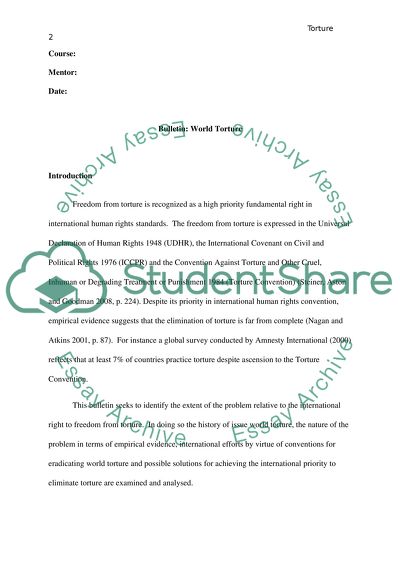Cite this document
(“Humans Rights - World Torture Essay Example | Topics and Well Written Essays - 4500 words”, n.d.)
Retrieved de https://studentshare.org/history/1390528-humans-rights-world-torture
Retrieved de https://studentshare.org/history/1390528-humans-rights-world-torture
(Humans Rights - World Torture Essay Example | Topics and Well Written Essays - 4500 Words)
https://studentshare.org/history/1390528-humans-rights-world-torture.
https://studentshare.org/history/1390528-humans-rights-world-torture.
“Humans Rights - World Torture Essay Example | Topics and Well Written Essays - 4500 Words”, n.d. https://studentshare.org/history/1390528-humans-rights-world-torture.


